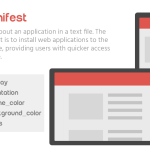
The Power of NFTs in Graphic Design: Monetizing Digital Artistry
- Post
- August 8, 2023
- Graphic Design, Graphic Design Tips, Web Design
- 0 Comments
The digital era has bestowed graphic designers with boundless opportunities to exhibit their skills and creations across the virtual canvas. As the lines between the physical and digital worlds continue to blur, NFTs have emerged as a game-changer, enabling designers to establish ownership and authenticity for their digital artworks. Unlike traditional art forms, NFTs are unique digital tokens that utilize blockchain technology to certify the originality and ownership of a particular piece of art.
Unveiling the Mechanism of NFTs
At the core of the NFT phenomenon lies blockchain technology, a decentralized and immutable digital ledger. When a graphic designer creates a piece of art and converts it into an NFT, they essentially tokenize their work. This process involves turning the art into a one-of-a-kind digital asset, ensuring that it cannot be replicated or altered. Each NFT is recorded on the blockchain, carrying information about the artist, the artwork’s origin, and its ownership history. This transparency and traceability have eradicated the issue of counterfeit digital art, providing artists with the recognition they deserve.
The Genesis of Value
The meteoric rise of NFTs in graphic design can be attributed to the creation of a digital scarcity that was previously unattainable. This scarcity is what underpins the value of NFTs. As collectors and enthusiasts scramble to own a piece of unique digital art, the demand for NFTs has driven their prices to astonishing heights. Graphic designers, once confined to client projects and freelance work, can now explore the realms of creating limited edition digital art that commands a premium in the market.
Monetizing the Unseen
For graphic designers, NFTs offer an avenue to monetize their artistry beyond the confines of traditional platforms. These tokens enable creators to retain a percentage of future sales whenever their NFTs change hands. This concept of ‘residual income’ serves as a significant departure from the conventional practice, where artists are often limited to a one-time payment. With NFTs, designers stand to benefit from the appreciation of their work over time, fostering a sustainable revenue stream.
Shaping Design Trends
The influx of NFTs has also left a profound impact on design trends. As artists embrace the possibilities offered by NFTs, they are encouraged to push the boundaries of creativity and innovation. The digital nature of NFTs allows for interactive and dynamic art forms, incorporating motion graphics, augmented reality, and other immersive elements. This fusion of technology and design has the potential to revolutionize how we perceive and experience art.
The Ethical Conundrum
While NFTs have opened up a world of opportunities for graphic designers, they have also raised ethical questions regarding their environmental impact. The process of minting NFTs, often referred to as ‘proof of work,’ involves significant energy consumption, leading to concerns about the carbon footprint associated with these tokens. As the industry evolves, there is a growing need for sustainable blockchain solutions that can mitigate the environmental consequences of NFT creation.
Commonly Asked Questions
Q1. How do NFTs authenticate the originality of digital artworks?
NFTs utilize blockchain technology to establish the originality and ownership of digital artworks. Each NFT is stored on an immutable digital ledger, ensuring transparency and traceability.
2. Can graphic designers earn a recurring income from NFTs?
Yes, graphic designers can earn a percentage of future sales whenever their NFTs are resold, providing them with a consistent source of income over time.
Q3. How are NFTs impacting design trends?
NFTs are driving innovation in design by encouraging artists to experiment with interactive and dynamic elements, blurring the lines between technology and creativity.
Q4. What is the environmental impact of NFTs?
The process of minting NFTs consumes significant energy, leading to concerns about their carbon footprint. The industry is exploring sustainable solutions to address these environmental challenges.
Q5. How are NFTs reshaping the art market?
NFTs have introduced digital scarcity and unique ownership to the art market, allowing artists to monetize their digital creations and collectors to own rare digital assets.
Final Words
In the landscape of graphic design, NFTs have emerged as a beacon of transformation, empowering artists to monetize their digital artistry in ways previously unimaginable. By combining technology, creativity, and blockchain innovation, graphic designers are charting new territories of self-expression and financial opportunities. As the NFT ecosystem evolves, the power of these tokens to reshape the art and design industry remains palpable, heralding a new era of digital art ownership and appreciation.




